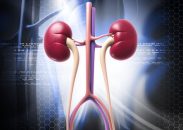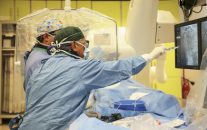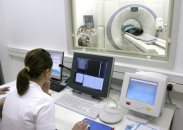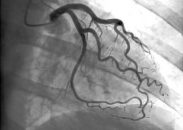When scheduling a coronary angiography, patients are usually instructed to fast for at least 8 hours (no oral intake after dinner). However, this strategy can lead to negative effects such as discomfort, irritability, dehydration, and even hypoglycemia in some cases. Previous studies have not shown significant differences in gastric complications between patients fasting only 2 hours before…
Simplified Rapid Intravenous Hydration for the Prevention of Contrast-Induced Nephropathy in Patients with Chronic Kidney Disease
Patients with chronic kidney disease (CKD) undergoing coronary angiography are at increased risk of developing contrast-associated acute kidney injury (CA-AKI), which is associated with increased mortality. According to current guidelines, the standard treatment for preventing CA-AKI in patients with moderate to severe CKD is long-duration peri-procedural intravenous hydration with saline solution. This standard hydration is…
Long-Term Mortality in Non-Obstructive Lesions in the Left Main Coronary Artery
Left main coronary artery (LMCA) intervention with significant lesions on both coronary angiography and intravascular ultrasound (IVUS), either through angioplasty (PCI) or myocardial revascularization surgery (MRS), is directly related to a decrease in long-term adverse clinical events. However, the relationship between subclinical LMCA disease (preserved luminal diameters) and long-term mortality is still unknown. A retrospective…
Computerized Tomography as First Coronary Study?
According to this new document recently published in JACC, a computerized tomography (CT) coronary angiography should be the first study done to diagnose a stable coronary artery disease. A multidisciplinary group of experts recommends using computerized tomography as first-line diagnosis in stable patients. According to these professionals, guidelines should be updated soon. Given the accruing…
Could CT angiography replace coronary angiography in the short term?
Original Title: CT Angiography for the Prediction of Hemodynamic Significance in Intermediate and Severe Lesions. Head-to-Head Comparison with Quantitative Coronary Angiography Using Fractional Flow Reserve as the Reference Standard. Reference: Matthew J. Budoff et al. J Am Coll Cardiol Img. 2016;9(5):559-564. The aim of this study was to compare the diagnostic accuracy of non-invasive…
Heart Disease with Typical Symptoms and Negative Stress Test
Original Title: Effect of the presence and type of angina on cardiovascular events in patients without known coronary artery disease referred for elective coronary angiography. Reference: Vavalle JP et al. JAMA Cardiology 2016; Epub ahead of print. Patients presenting typical angina with a negative stress test result prior catheterization have a high rate of heart…





